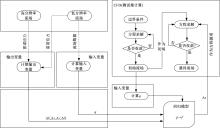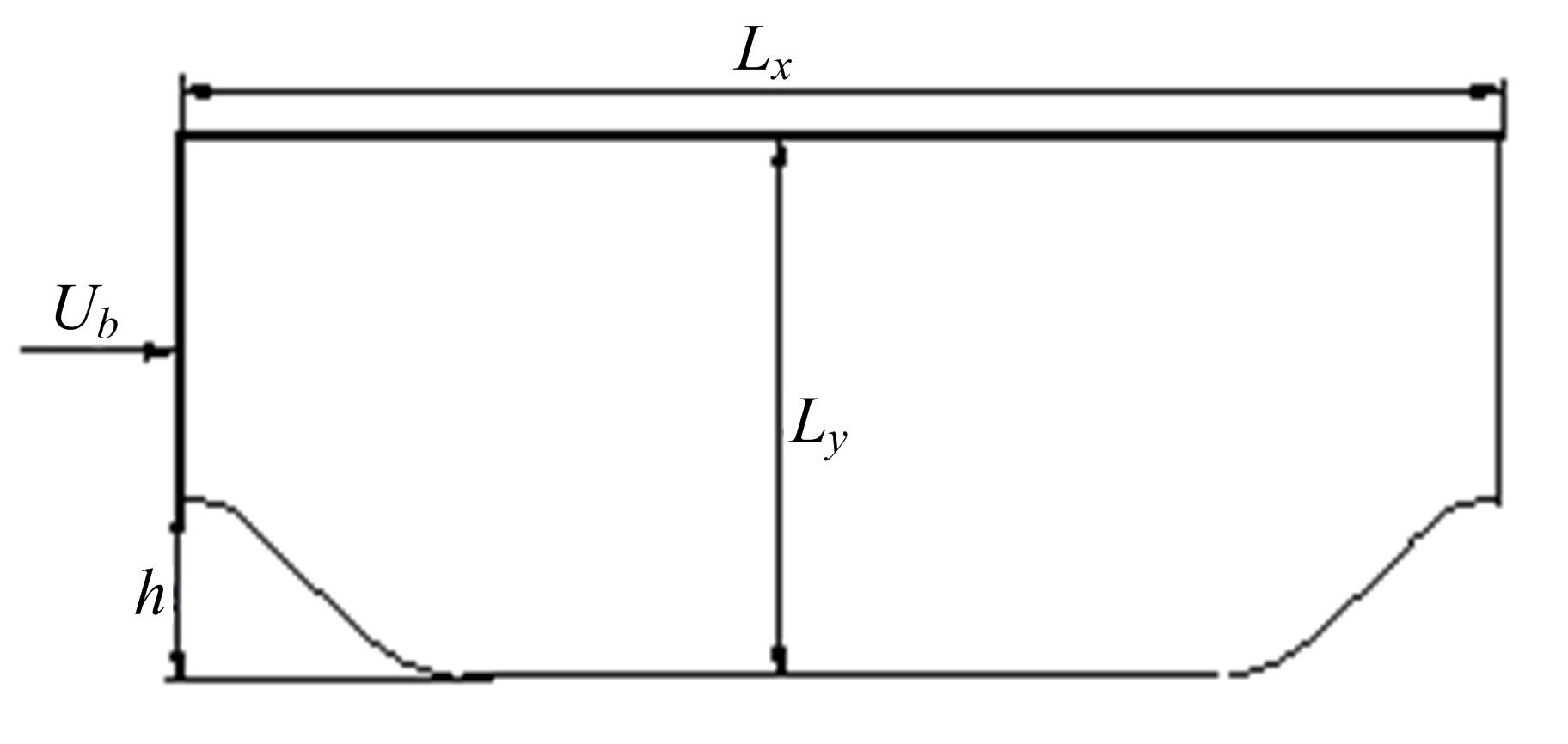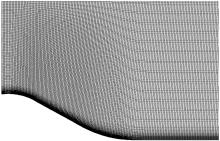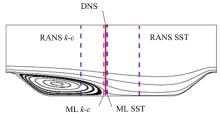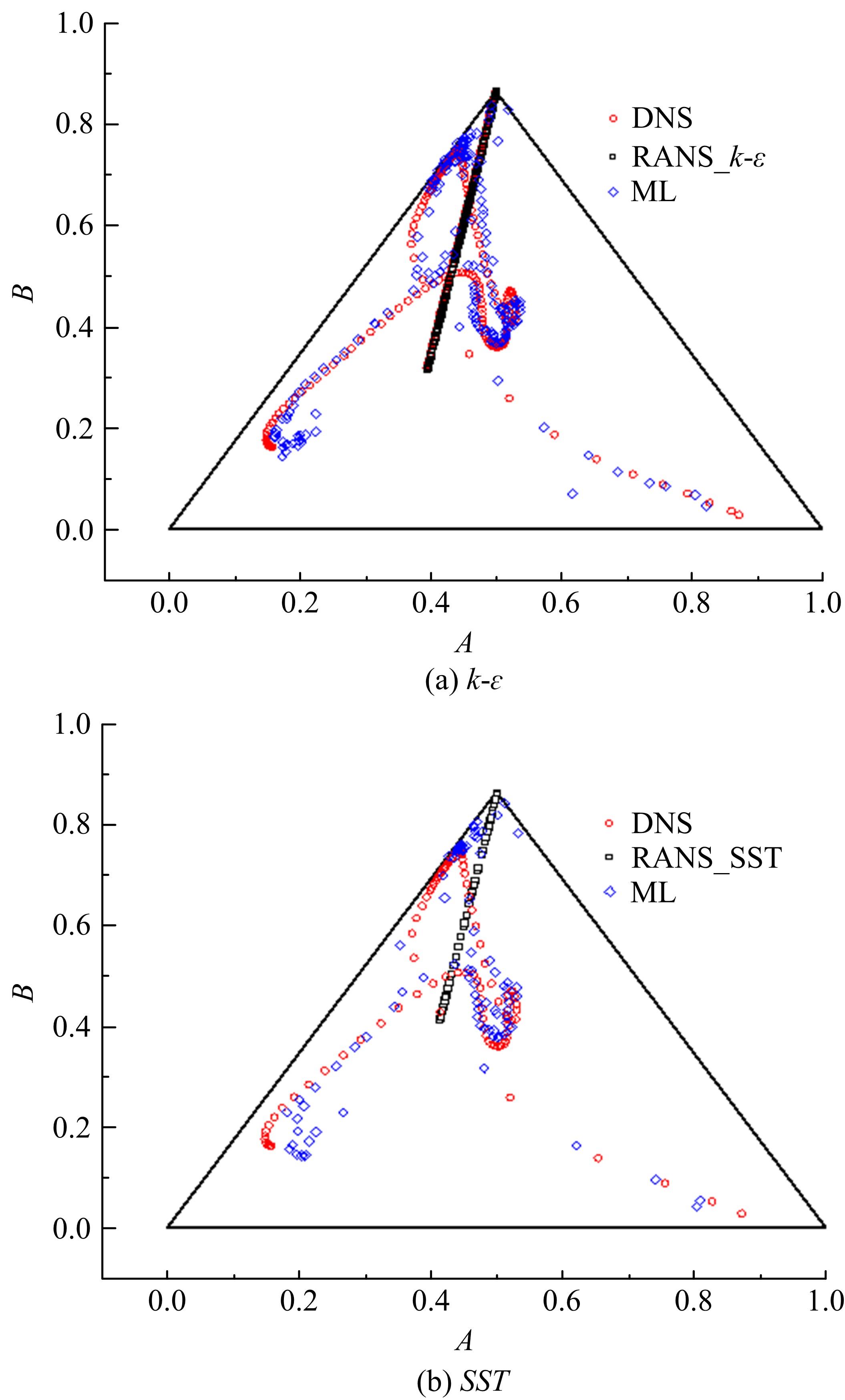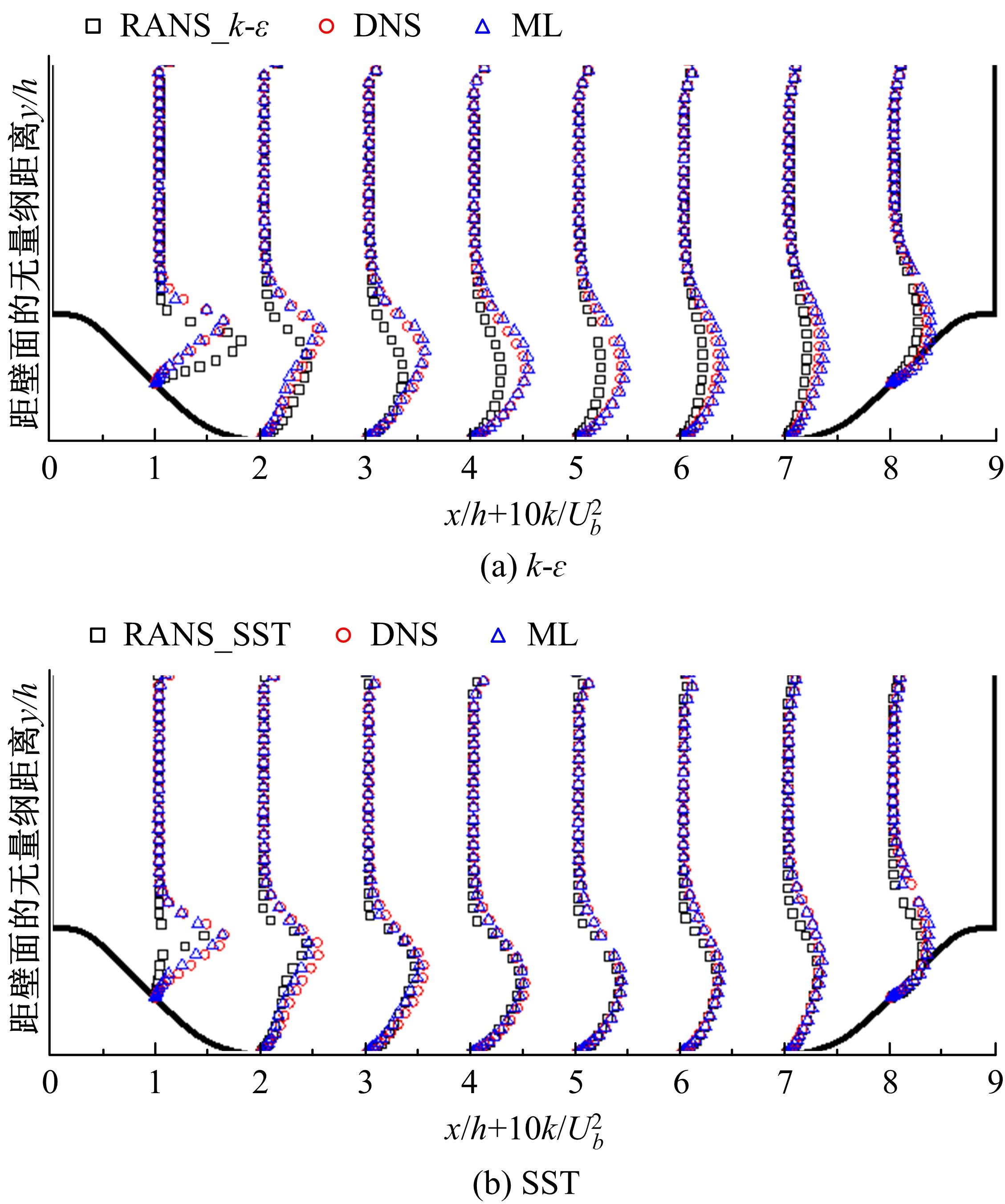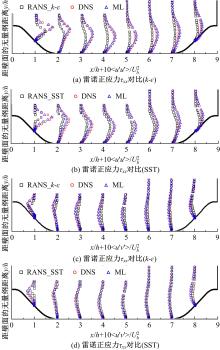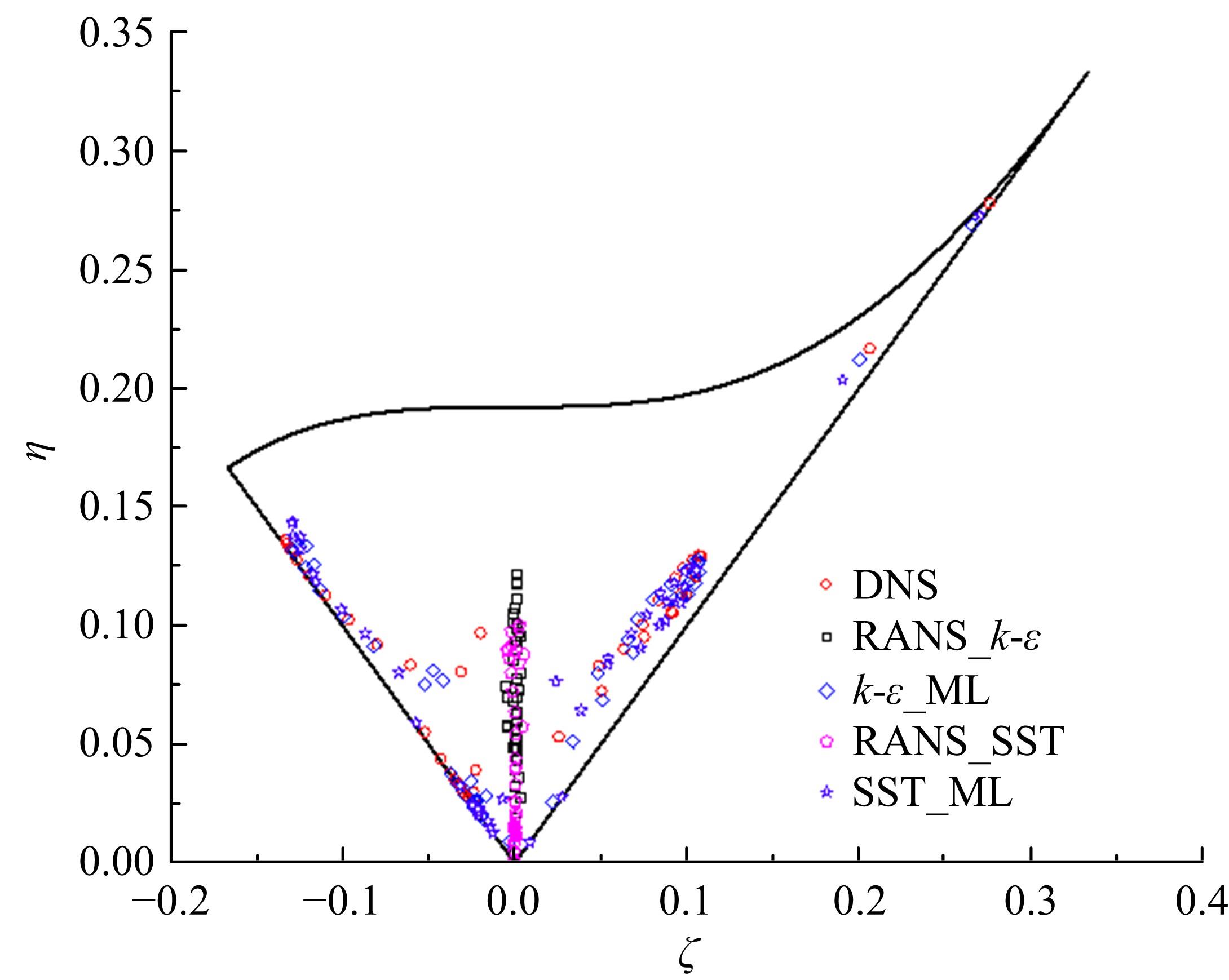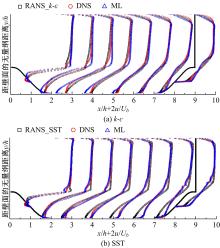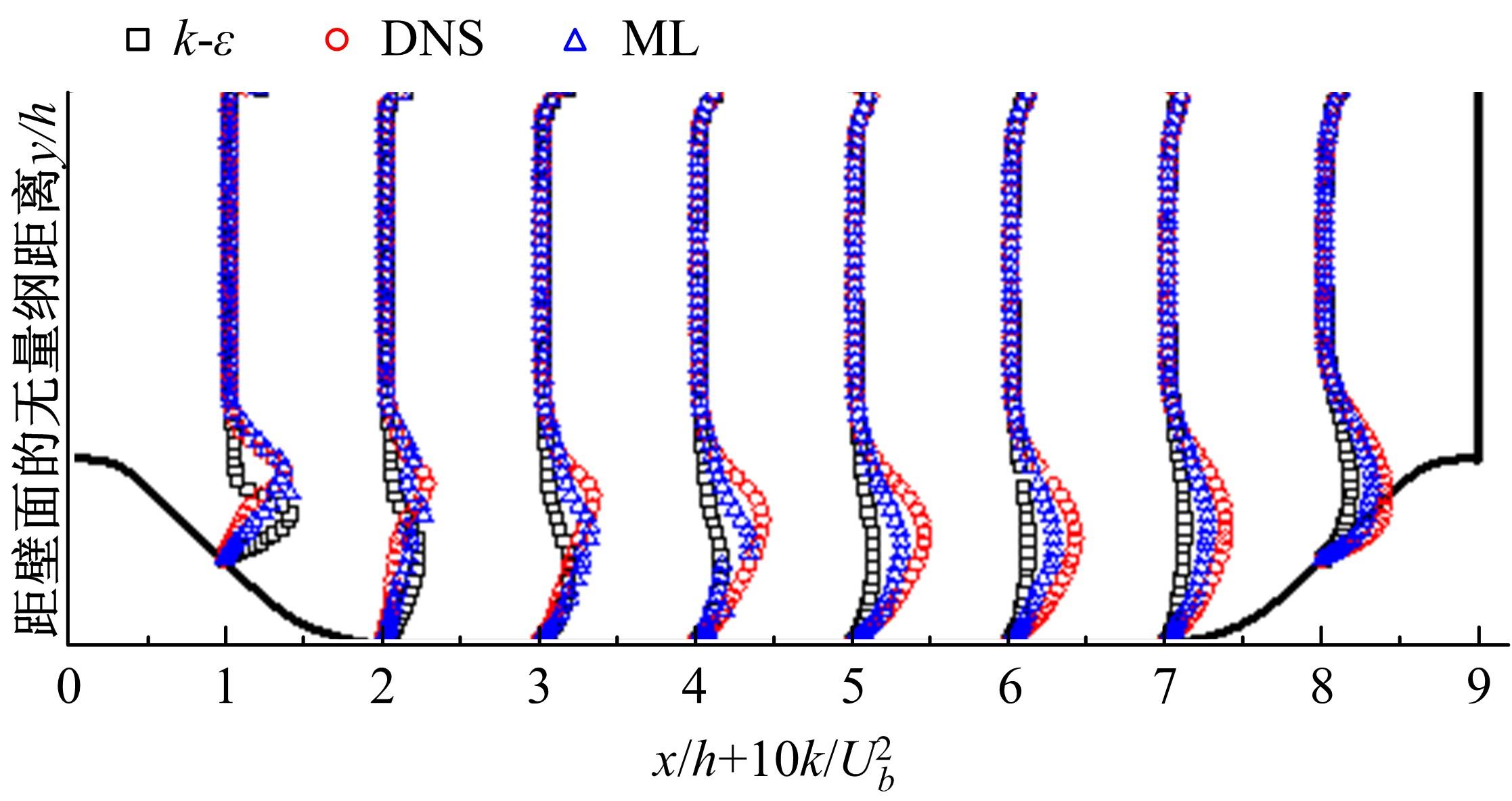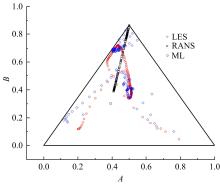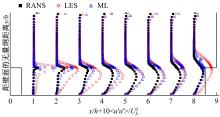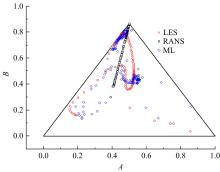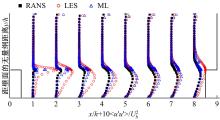Journal of Jilin University(Engineering and Technology Edition) ›› 2022, Vol. 52 ›› Issue (11): 2532-2541.doi: 10.13229/j.cnki.jdxbgxb20210322
Applying data driven algorithm to promote prediction accuracy of separation boundary simulation with eddy viscosity model
Zhong-hua GU( ),Pei-gang YAN,Pan-hong LIU,Xiang-feng WANG(
),Pei-gang YAN,Pan-hong LIU,Xiang-feng WANG( )
)
- School of Energy Science and Engineering,Harbin Institute of Technology,Harbin 150001,China
CLC Number:
- V231.3
| 1 | Marusic I, Candler G, Interrante V, et al. Real time feature extraction for the analysis of turbulent flows[J]. Data Mining for Scientific and Engineering Applications, 2001(2): 223-238. |
| 2 | Spencer A, Rivlin R. Isotropic integrity bases for vectors and second-order tensors[J]. Archive for Rational Mechanics & Analysis, 1964, 18(1): 51-82. |
| 3 | Tracey B D, Duraisamy K, Alonso J J. A machine learning strategy to assist turbulence model development[C]∥53rd AIAA Aerospace Sciences Meeting, Kissimmee, USA, 2015: 1287. |
| 4 | Zhang Z J, Duraisamy K. Machine learning methods for data-driven turbulence modeling[C]∥22nd AIAA Computational Fluid Dynamics Conference, Dallas, USA, 2015: 2460. |
| 5 | Duraisamy K, Zhang Z J, Singh A P. New approaches in turbulence and transition modeling using data-driven techniques[C]∥53rd AIAA Aerospace Sciences Meeting, Kissimmee, USA, 2015: 1284. |
| 6 | Singh A P, Duraisamy K, Zhang Z J. Augmentation of turbulence models using field inversion and machine learning[C]∥55th AIAA Aerospace Sciences Meeting, Grapevine, USA, 2017: 0993. |
| 7 | Wang J X, Wu J L, Xiao H. Physics informed machine learning approach for reconstructing reynolds stress modeling discrepancies based on DNS data[J]. Phys Rev Fluids, 2017(3): 1-22. |
| 8 | Ling J, Kurzawski A, Templeton J. Reynolds averaged turbulence modelling using deep neural networks with embedded invariance[J]. Journal of Fluid Mechanics, 2016, 807: 155-166. |
| 9 | Ling J, Templeton J. Evaluation of machine learning algorithms for prediction of regions of high Reynolds averaged Navier-Stokes uncertainty[J]. Physics of Fluids, 2015, 27(8): 085103. |
| 10 | Xiao H, Wu J, Wang J, et al. Quantifying and reducing model-form uncertainties in reynolds-averaged navier-stokes equations: a data-driven, physics-informed bayesian approach[J]. Journal of Computational Physics, 2016, 324: 115-136. |
| 11 | Xiao H, Wu J, Wang J, et al. Physics-informed machine learning for predictive turbulence modeling: progress and perspectives[J]. 55th AIAA Aerospace Sciences Meeting, Grapevine, USA, 2017: 1712. |
| 12 | Gamaharam M, Hattoriy Y. Searching for turbulence models by artificial neural network[J]. Physical Review Fluids, 2017, 2(5): 054604. |
| 13 | Maulik R, San O, Rasheed A, et al. Sub-grid modelling for two-dimensional turbulence using neural networks[J]. Journal of Fluid Mechanics, 2019, 858: 122-144. |
| 14 | Wang Z, Luo K, Li D, et al. Investigations of data-driven closure for subgrid-scale stress in large-eddy simulation[J]. Physics of Fluids, 2018, 30(12): 125101. |
| 15 | Wu J, Xiao H, Paterson E. Physics-informed machine learning approach for augmenting turbulence models: a comprehensive framework[J]. Physical Review Fluids, 2018, 3: 074602. |
| 16 | Thompson Roney L, Sampaio Luiz Eduardo B, de Braganca Alves Felipe A V, et al. A methodology to evaluate statistical errors in DNS data of plane channel flows[J]. Computation of Fluids, 2016, 130: 1-7. |
| 17 | Banerjee S, Krahl R, Durst F, et al. Presentation of anisotropy properties of turbulence, invariants versus eigenvalue approaches[J]. Journal of Turbulence, 2007, 8(32): 1-27. |
| 18 | Kumar V, Frohnapfel B, Jovaanovic J. Anisotropy invariant reynolds stress model of turbulence and its application to attached and separated wall-bounded flows[J]. Flow Turbulence Combust, 2009, 83: 81-103. |
| 19 | 颜培刚, 杜明杰. 燃气涡轮带肋冷却通道流动与换热的大涡模拟[J]. 哈尔滨工业大学学报, 2018, 50(1): 75-81. |
| Yan Pei-gang, Du Ming-jie. Numerical research of flow and heat transfer in a ribbed channel based on les approach[J]. Journal of Harbin Institute of Technology, 2018, 50(1): 75-81. |
| [1] | Yan ZHANG,Wei LIU,Shu-yong ZHANG,Yi-qiang PEI,Meng-meng DONG,Jing QIN. Optimization on thermal load of combustion chamber on two/four⁃stroke switchable diesel engine [J]. Journal of Jilin University(Engineering and Technology Edition), 2022, 52(3): 504-514. |
| [2] | Dong TANG,Yu-bin HAN,Lun HUA,Jin-chong PAN,Sheng LIU. Effect of lubricating oil ash on performance of gasoline particle filter in direct injection gasoline engine [J]. Journal of Jilin University(Engineering and Technology Edition), 2022, 52(11): 2501-2507. |
| [3] | Wen-bo ZHAO,Yu-jie LI,Jun DENG,Li-guang LI,Zhi-jun WU. Needle motion and its influence on in-nozzle flow and spray jet characteristics [J]. Journal of Jilin University(Engineering and Technology Edition), 2022, 52(10): 2234-2243. |
| [4] | Zhi-jun LI,Hao LIU,Li-peng ZHANG,Zhen-guo LI,Yuan-kai SHAO,Zhi-yang LI. Simulation on influence of microstructure of the wall on deep bed filtration of particulate filter [J]. Journal of Jilin University(Engineering and Technology Edition), 2021, 51(2): 422-434. |
| [5] | Jian WANG,Xin XU,Han GU,Duo-jun ZHANG,Sheng-ji LIU. Heating characteristics of DOC based on exhaust thermal management of diesel engine [J]. Journal of Jilin University(Engineering and Technology Edition), 2020, 50(2): 408-416. |
| [6] | Chang-qing SONG,Wen-miao CHEN,Jun LI,Da-wei QU,Hao CUI. Effects of single and dual ignition on combustion characteristics of natural gas under different equivalence ratios [J]. Journal of Jilin University(Engineering and Technology Edition), 2019, 49(6): 1929-1935. |
| [7] | Yi-xiao ZHU,Xiao-min HE,Yi JIN. Effects of radial strut width on flow structure ofsingle⁃cavity trapped vortex combustor [J]. Journal of Jilin University(Engineering and Technology Edition), 2019, 49(6): 1936-1944. |
| [8] | Chang-cheng LIU,Zhong-chang LIU,Jing TIAN,Yun XU,Ze-yu YANG. In⁃cylinder exergy destruction during combustion process ofheavy⁃duty turbocharged diesel engine [J]. Journal of Jilin University(Engineering and Technology Edition), 2019, 49(6): 1911-1919. |
| [9] | Qiao WANG,Wan-chen SUN,Liang GUO,Peng CHENG,Lu-yan FAN,Guo-liang LI. Effects of butanol/diesel blends on combustion and particulate emission characteristics of compression ignition engine [J]. Journal of Jilin University(Engineering and Technology Edition), 2019, 49(6): 1920-1928. |
| [10] | Xiao-yu HU,Guo-xiang LI,Shu-zhan BAI,Ke SUN,Si-yuan LI. Modified boiling heat transfer model considering roughness and material of heating surface [J]. Journal of Jilin University(Engineering and Technology Edition), 2019, 49(6): 1945-1950. |
| [11] | De⁃jun WANG,Zhi⁃chao LYU,Qi⁃ming WANG,Jian⁃rui ZHANG,Jian⁃nan DING. Cylinder pressure identification based on EKF and frequency⁃amplitude modulation Fourier series [J]. Journal of Jilin University(Engineering and Technology Edition), 2019, 49(4): 1174-1185. |
| [12] | Peng⁃fei ZANG,Zhe WANG,Yang GAO,Chen⁃le SUN. Investigation of integrated control strategy for stable operation of linear generator/engine system [J]. Journal of Jilin University(Engineering and Technology Edition), 2019, 49(3): 798-804. |
| [13] | JIANG Tao,LIN Xue-dong,LI De-gang,YANG Miao,TANG Xue-lin. Effect of control parameters on heat release rate with ANN method [J]. Journal of Jilin University(Engineering and Technology Edition), 2018, 48(6): 1747-1754. |
| [14] | LIN Xue-dong, JIANG Tao, XU Tao, LI De-gang, GUO Liang. Control strategy of high pressure pump in starting condition of high pressure common rail diesel engine [J]. Journal of Jilin University(Engineering and Technology Edition), 2018, 48(5): 1436-1443. |
| [15] | LI Zhi-jun, WANG Hao, HE Li, CAO Li-juan, ZHANG Yu-chi, ZHAO Xin-shun. Soot distribution features and its influence factors in catalytic diesel particulate filte [J]. Journal of Jilin University(Engineering and Technology Edition), 2018, 48(5): 1466-1474. |
|
||
